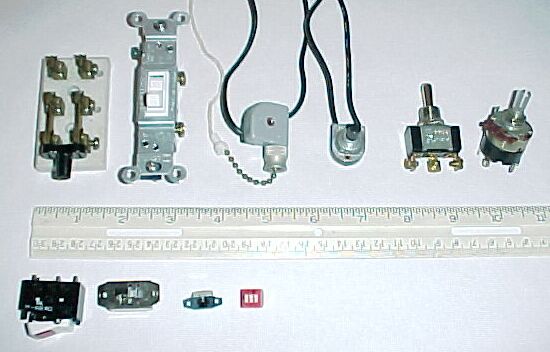
Some switches are shown above. Some switches, such as the 3rd from the left in the upper portion, are pulled. The one to the right of that one is twisted.





A switch is used to open or close a circuit. The most simple switch is the single pole single throw switch (SPST). It can either open or close one pathway. The pole is somewhat like the number of switches contained in the switch. If it is double pole single throw (DPST) it is the same as having two SPST switches, that when you flip on or off the DPST switch it is the same as throwing two SPST switches simultaneously. The throw is the number of positions the common point can move to. If it is a single pole double throw (SPDT) then the common connector on the switch can move from one point to another. So if you had the switch in one position, the common connector would be attached to one point. And if you then change its position it would move the common connector to the other point. You could use this kind of switch to turn off one object while turning on another when the switch changes position. And the double pole double throw (DPDT) is like having two SPDT switches.
You can also have more than two poles or two throws. You can have a triple pole triple throw (TPTT), or even more. The rotary switch normally has many throws, and poles. The one shown above is a single pole switch with five throws. A rotary switch is the kind you turn to move into different positions.

Some switches are shown above. Some switches, such as the 3rd from the left in the upper portion, are pulled. The one to the right of that one is twisted.